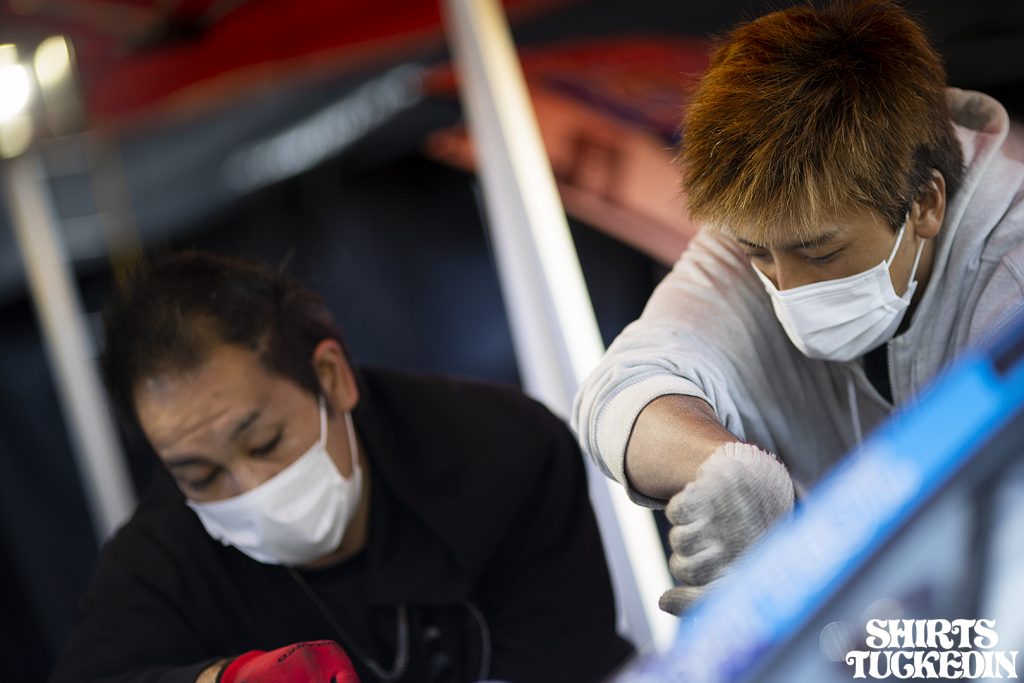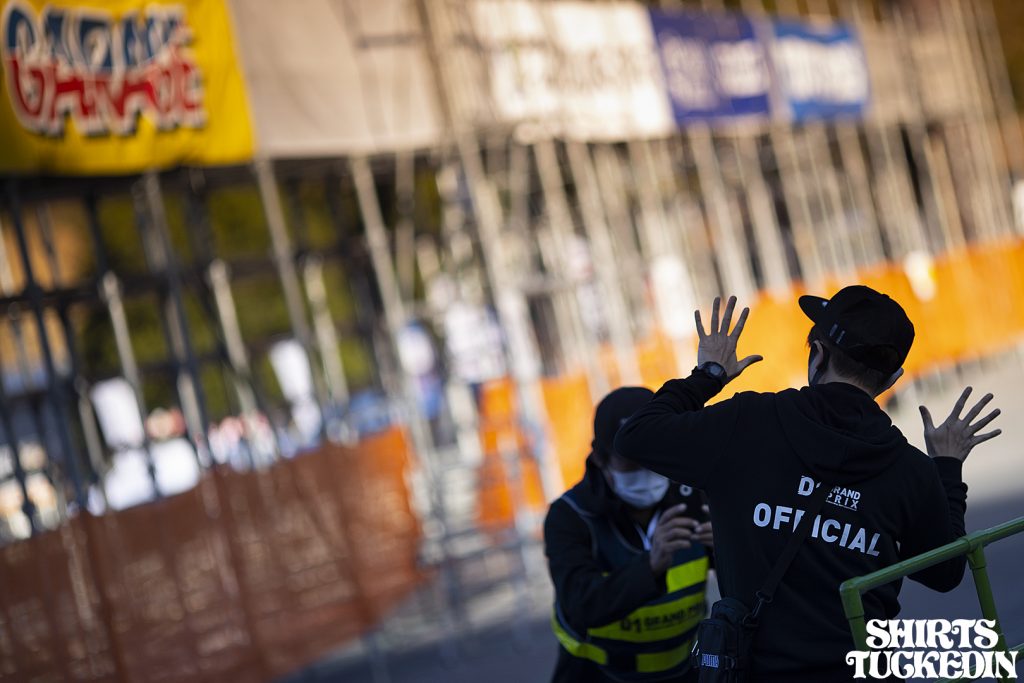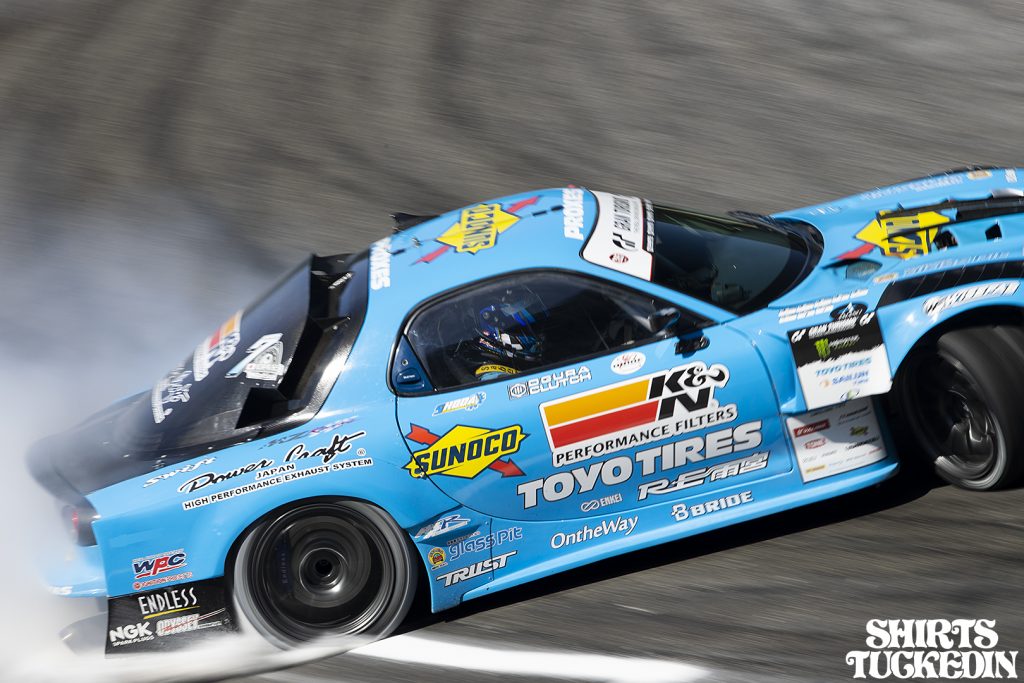D1GP奥伊吹
October 13th, 2021
the most recent double-rounds 7 & 8 of this years 2021 D1GP series once again held at okuibuki ski-resort in shiga prefecture, kansai 2 weekends ago here in japan. post tsukuba 2000 (last 2 rounds) the following round was planned to be ran and held at ebisu circuit, minami course however due to a little spike in covid cases it was postponed until late november therefore we were back at okuibuki in no time.
there are only 4 rounds left of 2021 both being doubles. end of october at autopolis and then late next month at minami circuit, ebisu. it has been an absolute blast shooting this years season and very excited for the last 2 courses especially as the weather is starting to shift over here dramatically.
a very large congratulations to nakamura naoki and the team for coming 1st for both rounds on saturday, sunday and placing 1st in top qualifier on sunday also. an absolute humbling and pleasure of an experience to be apart of such a determined and talented team. as usual here are some selects over the course of 2 days, just under 100 or so images constantly waiting for the sunsets as you can probably tell by looking at these.
we have a very large number of exciting new and re-vamped products still in the works will be 100% released well before christmas this year, potentially from halloween onwards. your support, patience and following is always appreciated.
biggest loveeee. caseyy x
奈良県から栃木
May 22nd, 2018

the drive to nikko circuit from nara early last year x
名阪スポーツランドに西尾さんのシルビアとワンエイティー
February 3rd, 2018

mitsuyoshi nishio-san. 音吉ファマリー leader from mie prefecture on a perfect, crisp morning at meihan x
名阪スポーツランドに中村直樹さんのニューシルビア
November 28th, 2017

nakamura naoki newest machine x
What is shockwave therapy?
May 7th, 2017
Shockwave therapy is a proven form of treatment that uses sound waves to relieve pain and facilitate healing. It is a treatment option for musculoskeletal disorders, such as tendonitis and plantar fasciitis, and it offers a non-invasive alternative to options such as corticosteroid injections. Learn more about the benefits and risks associated with this innovative form of treatment.
What is shockwave therapy?
It is a physical treatment that uses high-energy acoustic waves — known as shockwaves — to treat musculoskeletal pain and promote the healing of painful tissue. It works by stimulating increased blood circulation and cell growth, improving elasticity in the affected area, and ultimately reducing inflammation and pain. In some cases, it can be very effective in breaking up scar tissue or calcifications.
The treatment sessions are quick, usually taking 5–10 minutes. The practitioner applies a device – similar to an ultrasound machine – to the skin, moving it over the affected area. It’s a painless process, although it can be mildly uncomfortable – let your practitioner know if you experience any significant discomfort, as they will be able to adjust the intensity. The number of sessions varies, depending on the condition. Most problems will take 3–5 sessions to resolve, get the best results at shockwave los angeles.
How does it work?
Shockwave therapy works by sending acoustic waves at high intensity into the affected area. The high-energy sound waves generated by the device create a pulsation effect that trigger the body’s natural healing responses. This is particularly effective in stubborn cases that have failed to heal fully. The technique initiates a new healing cycle, therefore allowing even chronic problems to resolve fully.
In addition, sometimes injured areas can become calcified. The body can lay down calcium deposits to protect damaged tissue, causing pain. This is especially common in damaged shoulder (rotator cuff) tendons. Shockwave therapy can break down and disperse these calcified deposits, facilitating a return to good function.
This process uses your body’s own physiological mechanisms to heal damage or impairment in affected areas. This provides targeted long-term relief without the need for surgery or injections.
What problems can shockwave therapy help?
Most research around shockwave therapy has focused on problems of tendons and connective tissue. Examples include Achilles tendinopathy, tennis and golfer’s elbow, and plantar fasciitis (pain in the sole of the foot). Similarly, it can help tendons heal after joint surgery.
Equally, exciting new research has shown how shockwave therapy can stimulate nerves and blood vessels to regenerate, and medics are using it in some cases of spinal cord injury.
What are the risks?
Shockwave therapy can be extremely effective, and it has very few risks associated with it. Occasionally, some people experience mild side-effects. The most common of these are temporary soreness at the application site, bruising, swelling or tingling after the treatment. However, these usually resolve within a day or two.
People with nerve damage (neuropathy) should avoid having shockwave therapy as a treatment, as it can aggravate the condition. If you have cancer, you’ve had a recent steroid injection or you’re pregnant, shockwave therapy is not appropriate for you. In addition, you should seek advice if you have a history of blood clotting disorders or take blood-thinning medication, or if you have any metal pins or plates near the treatment site. Your practitioner will be able to advise you. It’s important that the device is applied correctly to avoid damage, so make sure your practitioner is fully qualified and experienced.
What are the benefits?
Shockwave therapy has been shown to be effective in treating a range of muscle, tendon and soft tissue conditions, including hamstring pulls, bursitis, tendonitis, and plantar fasciitis.
It is also useful in reducing chronic pain and inflammation. It can stimulate the healing of damaged tissue and improve mobility and flexibility. There are several other potential benefits to shockwave therapy, including reduced scarring and faster post-injury recovery times.
This type of treatment is also non-invasive, so it can be administered as a safe alternative to injections or sometimes even surgery.
Here at Woodside Clinic, we have been able to help many patients who have struggled with long-term pain and dysfunction. Shockwave therapy has enabled them to get back to their normal lives, activities and sports quickly, even where other treatments have failed to produce results. So, if you’ve been in pain for a long time, perhaps it’s time to give shockwave therapy a try.
Shockwave therapy is a proven form of treatment that uses sound waves to relieve pain and facilitate healing. It is a treatment option for musculoskeletal disorders, such as tendonitis and plantar fasciitis, and it offers a non-invasive alternative to options such as corticosteroid injections. Learn more about the benefits and risks associated with this innovative form of treatment.
What is shockwave therapy?
It is a physical treatment that uses high-energy acoustic waves — known as shockwaves — to treat musculoskeletal pain and promote the healing of painful tissue. It works by stimulating increased blood circulation and cell growth, improving elasticity in the affected area, and ultimately reducing inflammation and pain. In some cases, it can be very effective in breaking up scar tissue or calcifications.
The treatment sessions are quick, usually taking 5–10 minutes. The practitioner applies a device – similar to an ultrasound machine – to the skin, moving it over the affected area. It’s a painless process, although it can be mildly uncomfortable – let your practitioner know if you experience any significant discomfort, as they will be able to adjust the intensity. The number of sessions varies, depending on the condition. Most problems will take 3–5 sessions to resolve.
How does it work?
Shockwave therapy works by sending acoustic waves at high intensity into the affected area. The high-energy sound waves generated by the device create a pulsation effect that trigger the body’s natural healing responses. This is particularly effective in stubborn cases that have failed to heal fully. The technique initiates a new healing cycle, therefore allowing even chronic problems to resolve fully.
In addition, sometimes injured areas can become calcified. The body can lay down calcium deposits to protect damaged tissue, causing pain. This is especially common in damaged shoulder (rotator cuff) tendons. Shockwave therapy can break down and disperse these calcified deposits, facilitating a return to good function.
This process uses your body’s own physiological mechanisms to heal damage or impairment in affected areas. This provides targeted long-term relief without the need for surgery or injections.
What problems can shockwave therapy help?
Most research around shockwave therapy has focused on problems of tendons and connective tissue. Examples include Achilles tendinopathy, tennis and golfer’s elbow, and plantar fasciitis (pain in the sole of the foot). Similarly, it can help tendons heal after joint surgery.
Equally, exciting new research has shown how shockwave therapy can stimulate nerves and blood vessels to regenerate, and medics are using it in some cases of spinal cord injury.
What are the risks?
Shockwave therapy can be extremely effective, and it has very few risks associated with it. Occasionally, some people experience mild side-effects. The most common of these are temporary soreness at the application site, bruising, swelling or tingling after the treatment. However, these usually resolve within a day or two.
People with nerve damage (neuropathy) should avoid having shockwave therapy as a treatment, as it can aggravate the condition. If you have cancer, you’ve had a recent steroid injection or you’re pregnant, shockwave therapy is not appropriate for you. In addition, you should seek advice if you have a history of blood clotting disorders or take blood-thinning medication, or if you have any metal pins or plates near the treatment site. Your practitioner will be able to advise you. It’s important that the device is applied correctly to avoid damage, so make sure your practitioner is fully qualified and experienced.
What are the benefits?
Shockwave therapy has been shown to be effective in treating a range of muscle, tendon and soft tissue conditions, including hamstring pulls, bursitis, tendonitis, and plantar fasciitis.
It is also useful in reducing chronic pain and inflammation. It can stimulate the healing of damaged tissue and improve mobility and flexibility. There are several other potential benefits to shockwave therapy, including reduced scarring and faster post-injury recovery times.
This type of treatment is also non-invasive, so it can be administered as a safe alternative to injections or sometimes even surgery.
Here at Woodside Clinic, we have been able to help many patients who have struggled with long-term pain and dysfunction. Shockwave therapy has enabled them to get back to their normal lives, activities and sports quickly, even where other treatments have failed to produce results. So, if you’ve been in pain for a long time, perhaps it’s time to give shockwave therapy a try.
SHIRTSTUCKEDIN NAKAMURA NAOKI SPONSORSHIP
February 12th, 2017

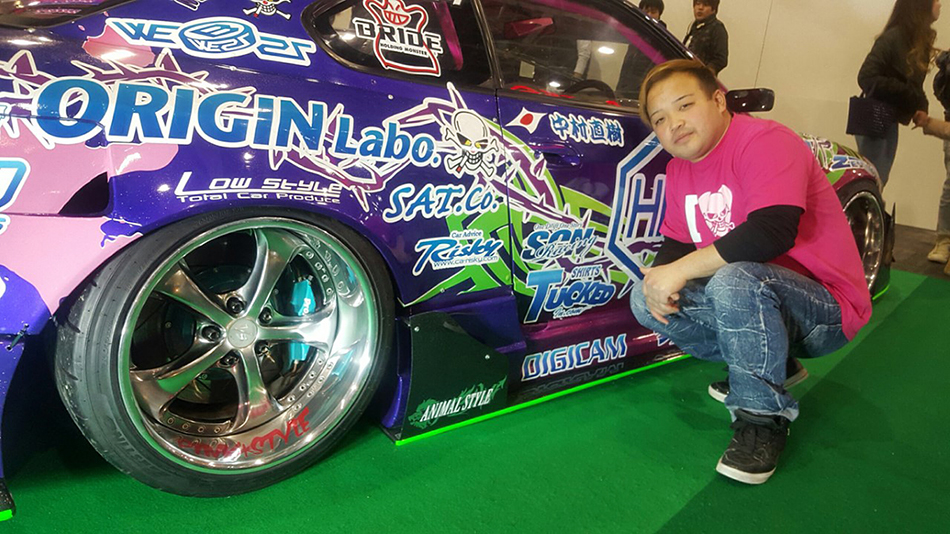
extremely happy to announce that SHIRTSTUCKEDIN will be a sponsor of N-STYLE Naoki Nakamura for the 2017 season. blessed and honoured to give something back and support one of the best for this year.
if you’re wishing to support please visit theonline store below with a handful of pink style and N-STYLE inventory.
www.pinkstyle.bigcartel.com
casey xxx
名阪スポーツランドでのひとみGO走行会昨年
November 1st, 2016

昨年走るx
名阪スポーツランドでのひとみGOドリフト走行会のイベントの中村直樹さんのシルビア
June 10th, 2016
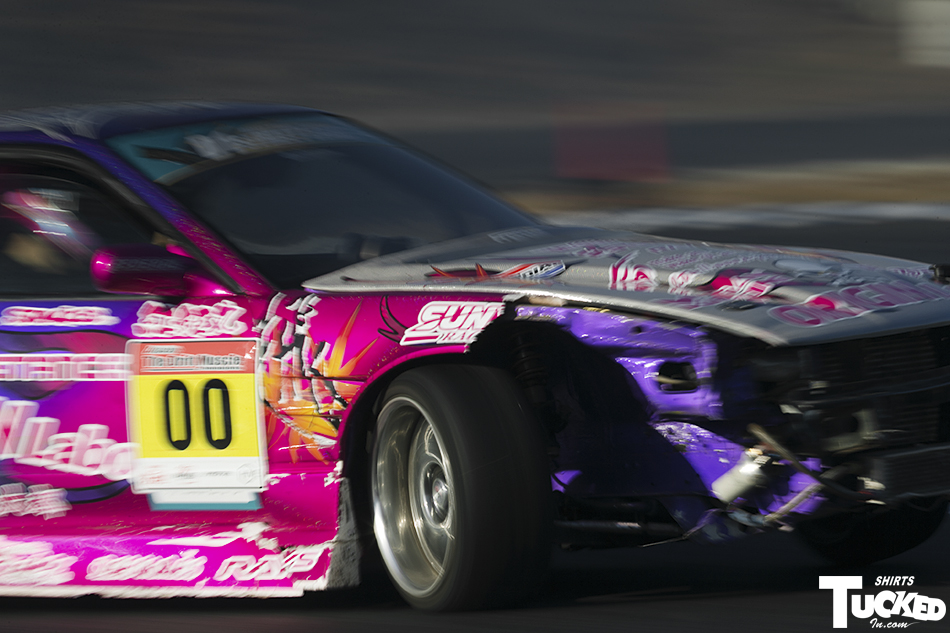
名阪スポーツランドでのひとみGO走行会 x
名阪スポーツランドでのチームバーストのドリフト走行会イベント
February 22nd, 2016

バースト走行会 x
中村直樹ホームでの長島啓介さん
January 6th, 2016

中村直樹ホームでの長島啓介さん x










































